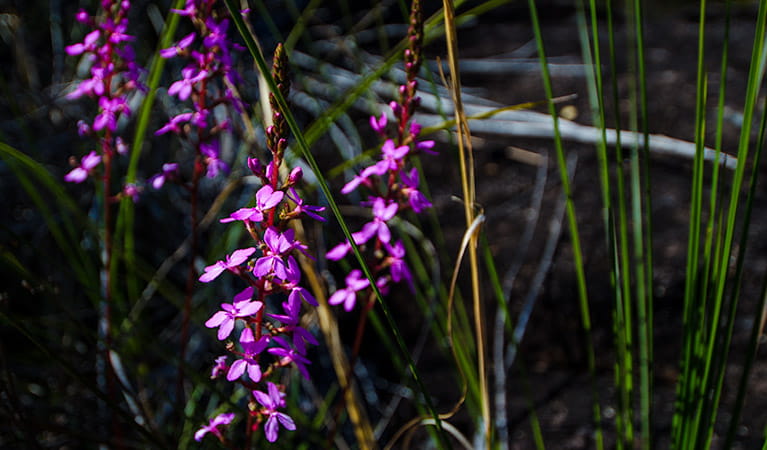Marramarra National Park
Overview
Marramarra National Park is a one of the Hawkesbury’s best-kept secrets. It’s great for canoeing, kayaking, swimming, cycling, camping, bushwalking, picnicking and birdwatching.
Read more about Marramarra National Park
Marramarra National Park is one of the Hawkesbury’s best-kept secrets and has to be among the most exciting national parks in the country. Hidden away in the northern outskirts of Sydney at the junction of Hawkesbury River and Berowra Creek, it’s a peaceful pocket of Aussie bush on Sydney’s doorstep, just waiting to be explored.
It’s so close to the city, but you’ll barely see another soul. Go boating, kayaking and canoeing on the beautiful waters of Hawkesbury River and Marramarra Creek. Enjoy bushwalking on the many walking tracks and go cycling on your mountain bike along Canoelands Ridge management trail. Take in spectacular views while discovering more about the area’s Aboriginal heritage, and see historic heritage sites from early European settlement.
From all this exploring, you’ll probably be looking for somewhere to take a break. Get back to basics and spend a night camping at Gentlemans Halt or Marramarra Creek campgrounds on the shores of Hawkesbury River. Or simply drop in for the day and enjoy this beautiful place to picnic, not far from Hornsby.
Local alerts
For the latest updates on fires, closures and other alerts in this area, see https://www.nationalparks.nsw.gov.au/visit-a-park/parks/marramarra-national-park/local-alerts
Contact
- in the Sydney and surrounds region
Marramarra National Park is always open but may have to close at times due to poor weather or fire danger.
-
-
Lane Cove National Park Office
02 8448 0400
Contact hours: Monday to Friday, 9am to 4pm. - Lane Cove National Park, 2 Max Allen Road Lindfield NSW 2070
-
Email: npws.northwesternsydney@environment.nsw.gov.au
-
Lane Cove National Park Office
-
-
Bobbin Head Visitor Centre
02 9472 8949
Contact hours: 10am to 4pm daily. 9am to 4pm during summer school holidays, closed 12pm-12:30pm. Closed Christmas Day. - 688 Ku-ring-gai Chase Road, Mount Colah, NSW 2079
-
Email: bobbin.head@environment.nsw.gov.au
-
Bobbin Head Visitor Centre
Visitor info
All the practical information you need to know about Marramarra National Park.
Map
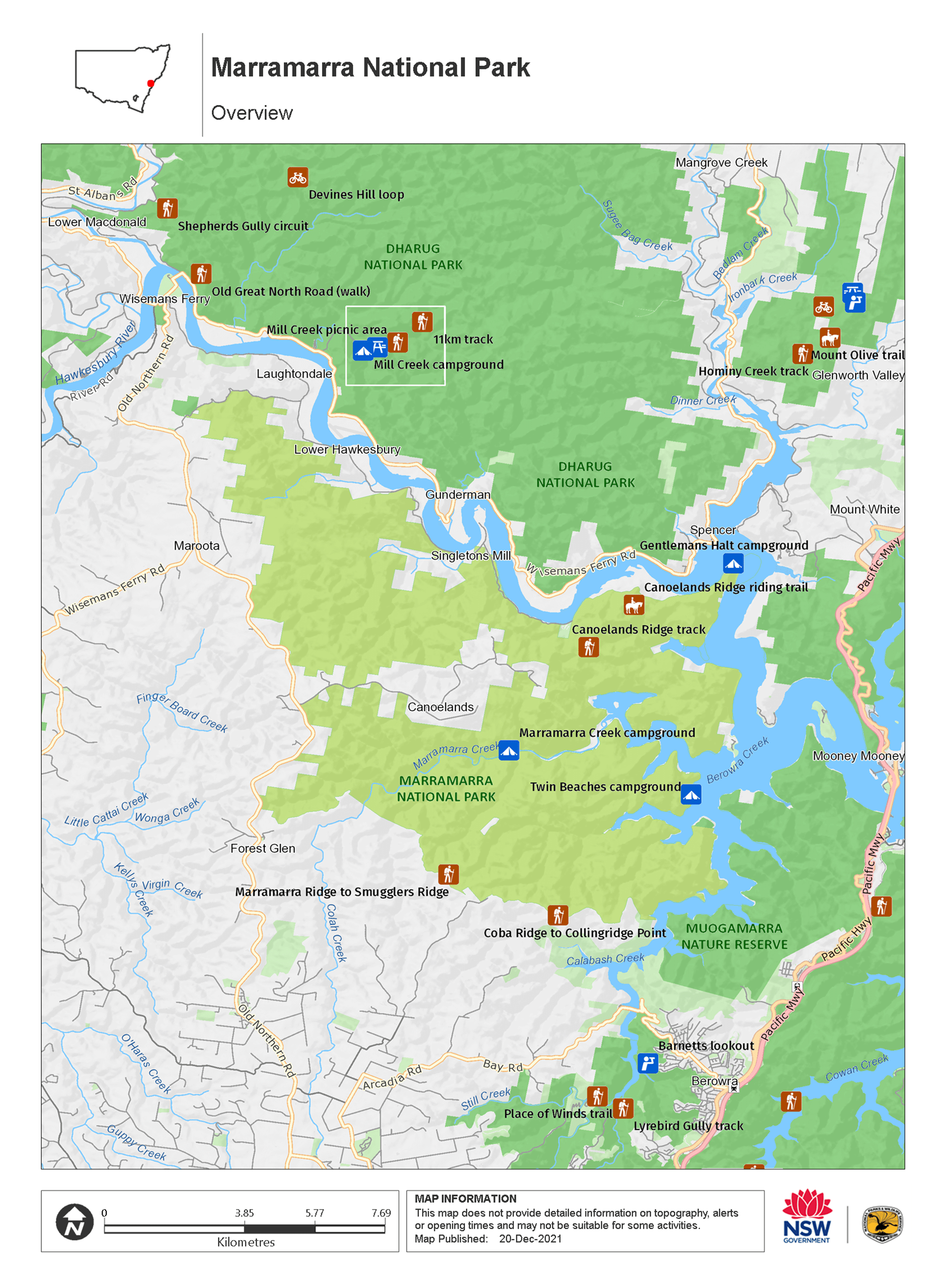
Map legend

Getting there and parking
Get driving directions
From Hornsby:
- Follow Galston Road through Galston Gorge
- To access the southern precinct, turn right into Arcadia Road, then after approximately 4km, turn left into Cobah Road and continue along Bloodwood Road to the park.
- To access the northern precinct, continue through Galston and turn right onto Old Northern Road, then after approximately 18km, turn right into Canoelands Road.
From Wisemans Ferry:
- Drive south on Old Northern Road towards Dural
- To access the northern precinct, turn left into Canoelands Road after approximately 18km.
- To access the southern precinct, after approximately 34km, turn left into Wylds Road, continue, then turn left into Arcadia Road. After approximately 4km, turn left into Cobah Road and continue along Bloodwood Road to the park.
Parking
- Canoelands Ridge horse riding trail See on map
By bike
Check out the Bicycle information for NSW website for more information.
By public transport
For information about public transport options, visit the NSW transport info website
Best times to visit
There are lots of great things waiting for you in Marramarra National Park. Here are some of the highlights.
Autumn
Unwind and take in the serenity of camping at Gentlemans Halt or Marramarra Creek campgrounds.
Spring
Wander through the bush and enjoy the colourful display of wildflowers.
Summer
Paddle the waterways by kayak or canoe and have a swim in the rivers.
Winter
Enjoy longer hikes and day walks such as Canoelands Ridge walking track or Marramarra Ridge to Smugglers Ridge walking track.
Weather, temperature and rainfall
Summer temperature
Average
19°C and 28°C
Highest recorded
44.8°C
Winter temperature
Average
6°C and 16°C
Facilities
Toilets
Picnic tables
Barbecue facilities
Maps and downloads
Prohibited
Pets
Pets and domestic animals (other than certified assistance animals) are not permitted. Find out which regional parks allow dog walking and see the pets in parks policy for more information.
Smoking
NSW national parks are no smoking areas.
Nearby towns
Hornsby (24 km)
A suburb in Sydney's upper north shore, Hornsby is conveniently located for easy access to Lane Cove National Park, Berowra Valley Regional Park, and the heritage-listed Ku-ring-gai Chase National Park - Australia's second-oldest national park. Explore walking and cycling tracks and Aboriginal sites, as well as marinas, cafes and picnic areas.
Sydney City Centre (51 km)
No trip to Sydney is complete without spending some time in the city’s beautiful parks. Whether it’s in central areas like Hyde Park or the Royal Botanic Gardens or further out in Centennial Parklands, there’s plenty of green space to go out and enjoy.
Hawkesbury area
Explore the beautiful Hawkesbury River with Australia's Last River Boat Postman, or sample fresh oysters at a casual riverside cafe. Start your Hawkesbury adventure with a seaplane flight from Sydney to a local restaurant by the river.
Learn more
Marramarra National Park is a special place. Here are just some of the reasons why:
Is it a bird?
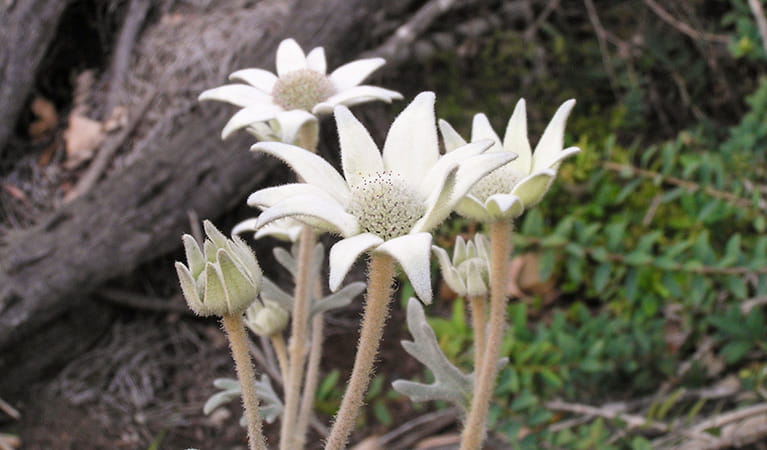
Marramarra is home to a great diversity of animals and birds, making it a great place for wildlife spotting and bird watching. You're likely to spot a white-breasted sea eagle, swamp wallaby, possum or kingfisher in your travels. If you're lucky, you might come across some of the more uncommon animals found here such as rails, gang-gang and glossy black cockatoos, and red-crowned toadlets.
- Canoelands Ridge walking track Canoelands Ridge walking track is a beautiful day walk near Hornsby and Sydney. See scenic Hawkesbury River views and native wildflowers along the way on this long hike.
- Marramarra Ridge to Smugglers Ridge walking track Discover the beauty of Marramarra, near Hornsby, on this day walk. Enjoy scenic views, historic heritage, colourful wildflowers and picnicking along the way.
Plentiful lands
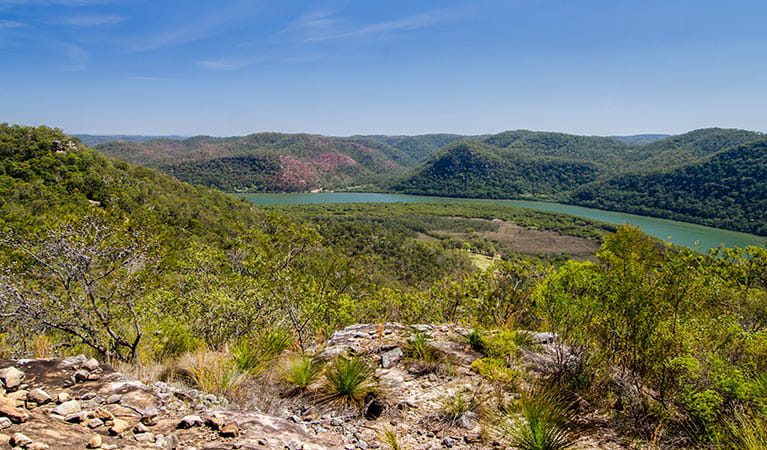
The sandstone ridges and deep gullies of Marramarra support a wide range of environments. Experience salt marsh and mangrove forests on the shores of Hawkesbury River, to tall open forest and ridge-top woodlands. In spring, the bush turns into a brilliant display of colour as the wildflowers burst in action. Discover the unique plant life and help preserve it – why not participate in the bush regeneration volunteer programs in the park?
- Canoelands Ridge walking track Canoelands Ridge walking track is a beautiful day walk near Hornsby and Sydney. See scenic Hawkesbury River views and native wildflowers along the way on this long hike.
- Marramarra adventurous journeys with YouthAdvance Fuel your sense of adventure on an exciting trip with YouthAdvance. You’ll learn navigation, teamwork and campcraft in beautiful Marramarra National Park, near Sydney.
- Marramarra Ridge to Smugglers Ridge walking track Discover the beauty of Marramarra, near Hornsby, on this day walk. Enjoy scenic views, historic heritage, colourful wildflowers and picnicking along the way.
Exploring the land
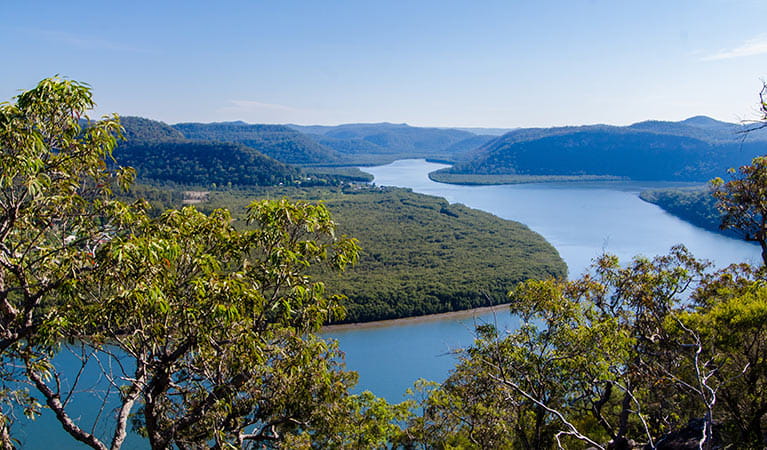
In the early days of the new colony, Hawkesbury River was a major communication route and supported an active river-based community. European exploration began as early as 1789 when Governor Arthur Phillip took his second trip up Hawkesbury River and camped at Gentlemans Halt. By 1884, there was a small community at Gentlemans Halt and a provisional school had been established; you can still see the foundations of a road and a wharf from this era. Other reminders of European historic heritage include remains of orange orchards along Marramarra Creek and the foundations of a hut, stone walls and a well at Big Bay.
Darug country
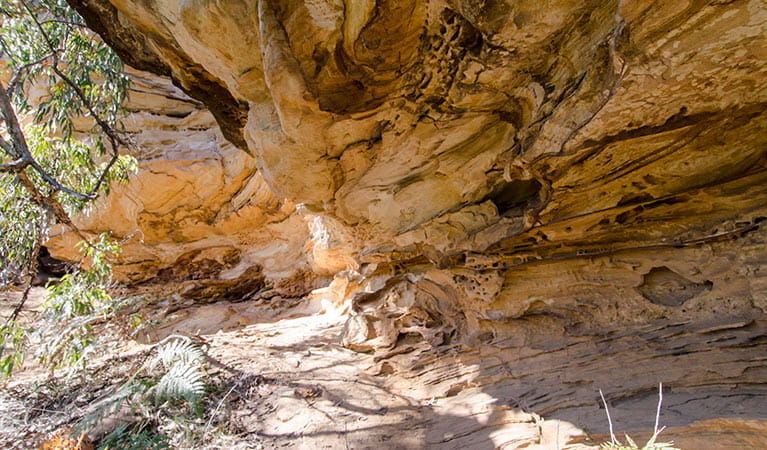
Marramarra is part of the traditional lands of the Darug Aboriginal people. Their use and respect of the land can be found in isolated corners of the park. The surviving Aboriginal sites, which provide the only indications of traditional life in the area, are of special importance to local Aboriginal communities. Cave art, rock engravings, grinding grooves, middens, scarred trees, and other occupational deposits and stone arrangements are all part of Marramarra.
Education resources (1)
What we're doing
Marramarra National Park has management strategies in place to protect and conserve the values of this park. Visit the OEH website for detailed park and fire management documents.

